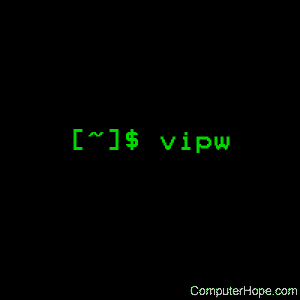Linux vipw and vigr command

On Unix-like operating systems, the vipw and vigr commands are used to edit the password, group, shadow-password, and shadow-group files.
This page covers the Linux versions of vipw and vigr.
Description
The vipw and vigr commands edit the files /etc/passwd and /etc/group, respectively. If the -s flag is specified, these commands will edit the shadow (secure) versions of their files: /etc/shadow and /etc/gshadow, respectively. The programs sets the appropriate locks to prevent file corruption. When looking for an editor, the programs will first try the environment variable $VISUAL, then the environment variable $EDITOR, and finally the default editor, vi.
Syntax
vipw [options]
vigr [options]
Options
| -g, --group | Edit group database. |
| -h, --help | Display help message and exit. |
| -p, --passwd | Edit passwd database. |
| -q, --quiet | Operate quietly. |
| -R, --root CHROOT_DIR | Apply changes in the CHROOT_DIR directory and use the configuration files from the CHROOT_DIR directory. |
| -s, --shadow | Edit shadow or gshadow database. |
Environment
The following environment variables affect the operation of the vipw and vigr commands:
| VISUAL | The editor to use. |
| EDITOR | The editor to use if VISUAL is not set. |
Files
| /etc/group | Group account information. |
| /etc/gshadow | Secure group account information. |
| /etc/passwd | User account information. |
| /etc/shadow | Secure user account information. |
Examples
vipw
Edit /etc/passwd.
vigr
Edit /etc/group.
vipw -s
Edit /etc/shadow.
vigr -s
Edit /etc/gshadow.
Related commands
addgroup — Add a group to the system.
adduser — Add a group to the system.
groupadd — Add a group to the system.
useradd — Add a user to the system.
passwd — Change a user's password.
vi — Text editor based on the visual mode of ex.
visudo — Safely edit the sudoers file.
